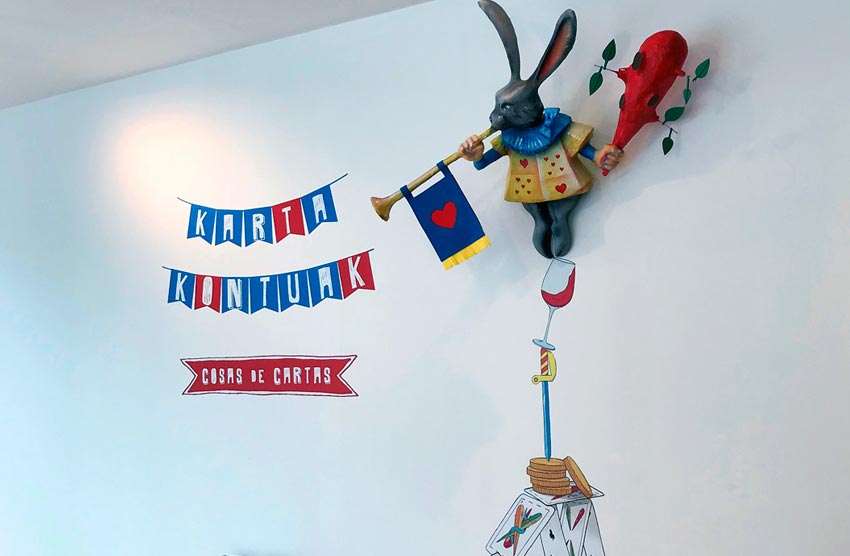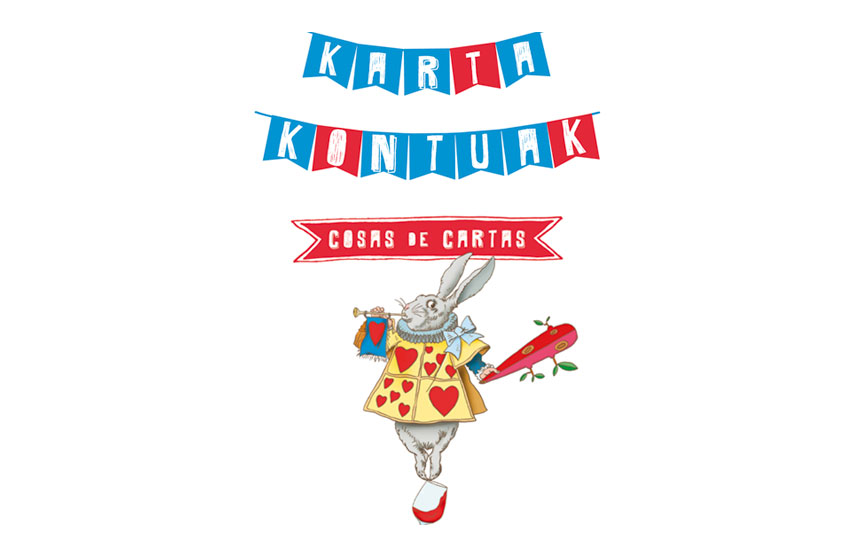A selection of 134 decks from the collection of the Fournier Naipes Museum of Álava is presented. Approximately half (61 decks) have been made in the State, and the rest in different European countries. They are mainly German decks (25 copies), French and English; there are also letters from Holland, Finland, Portugal and Russia, and other countries such as Argentina, Mexico, India, Cuba and the United States.
The most represented card manufacturer is, how could it be otherwise, our company Heraclio Fournier cards, with 26 decks made at different times of the company, specifically between 1918 and 2015.
The wide and varied collection of the Fournier Naipes Museum, requires temporary exhibitions to show the diversity of its funds, which cannot be exhibited in its entirety in the museum’s permanent exhibition due to space limitations. This also allows the visit to the museum to be a more dynamic experience. The visitor is therefore “invited” to “repeat” in the museum, to learn more about our collection; it is another opportunity to be in contact with the public, inform them of other activities, listen to their opinions, …

It is intended to address these samples according to criteria of different character, since the volume and diversity allows the approach to the cards from different facets: following chronological criteria, or depending on different techniques (as was done last year with the exhibition ” Chalkós “on eighteenth-century engraving), geographical areas (as was the exhibition” Ganjifa “with cards from India, held in 2016), or on specific thematic contents (such as the exhibition on the so-called” transformation decks “made in 2015 ), etc.
On this occasion, some cards that we played in our childhood, which are also part of the museum’s collection, have been recovered. They are displayed in the exhibition hall, arranged in different areas, dedicated for example to games, families, stories and educational cards. These children’s cards, here, in other places and in other times, were used not only to play and pass the time, but also to learn in an entertaining and fun way. It is demonstrated that throughout history, games of all kinds have been used, not just cards, as authentic pedagogical tools; to develop memory, practice reading or mathematics, or acquire knowledge about other diverse fields such as history or plant and animal species. This educational use of the cards, we can see in the exhibition several examples. Letters to learn playing or playing, learning to add and subtract, to match words with images, to form dinosaur quartets with strange names, or protagonists of different historical events.

But they do not have just this educational goal. They are letters to play. To entertain, to have fun with friends, at home, on vacation … Card games, with more or less simple rules, to “discard”, to “steal a letter”, rules that are taught to one another, and that can even be changed, if the game is more fun.
Also in other countries we find games with similar rules. Although apparently some of these decks are more “exotic”, to contain different images, or a peculiar aesthetic, although they have names like Old Maid, Schnipp Schnapp, Cric Crac, Zwarte Piet, … are also simple games, similar by example to the “game of the monkey”, to “make couples” or “make families”, etc.
We have selected cards manufactured between the XVIII and XXI centuries. The oldest, from around 1710, is an English deck of educational type, “Arithmetical cards”; other interesting or curious decks are the miniature letters of Clemente de Roxas of 1800, also those of the brand Liliput (de Fournier), a French “Alfabetic Game” of 1810, or the English decks of families of the second half of the 19th century, to highlight some.
In this exhibition we also approach the origin of these “family” games, which date back to 1850 in England. We can see the dissemination of this typology until the mid-twentieth century (evolving with different variants, of 11 families with different crafts, decks of 6 families …) and for example in the 60s to the popular games of “the 7 families “De Fournier, how successful they were.
Just as in 1851 the manufacturer John Jaques commissioned the draftsman John Tenniel the designs of “Happy Families”, a highly successful deck, spread through the first Universal Exhibition in London, also Fournier, in the different stages of the history of the factory, has turned to designers, and has had on staff artists and artists who have played a key role in the success of its production. Together with the concern for the quality of the materials and the printing processes and other treatments, it is also the design, the image, the drawings, the appearance, “the visual”, responsible for its success.
We have quoted John Tenniel, who would be years later the author of the original illustrations of “The Adventures of Alice in Wonderland.” We can also mention other authors of children’s cards such as Carlos Busquets, Berta Upton, Enrique Pastor, Pierre Jacquot, or current illustrators like Lina Vila, but we want to highlight José Luis López Fernández, a Vitorian illustrator, author of the designs of the “Families of 7 countries” deck, published since 1965 by Naipes Fournier, and who was also an illustrator of numerous and varied works, from greeting cards to boxes of chocolates and candies (like those of Elgorriaga or Goya), and of a great number of children’s stories.

In relation to children’s stories, we have dedicated a section of the exhibition also to this topic. The “story” decks are a summarized version of the original stories. They are very colorful letters, very colorful and also very careful design, to make them attractive among the youngest.
The Bibat museum has wanted to bring families who do not know the Fournier Museum of Cards, or who have come some other time, to “repeat” because they will not meet what they saw then. It is an exhibition “for all audiences”. An exhibition of children’s cards also directed “to seniors”, since they are likely to meet again with cards that have not played a few years ago. To enjoy with the little ones, and play again with those or other cards, changing the rules or not.
In addition, the exhibition has been complemented with two didactic workshops, intended for children, but also for adults, which took place on May 26. In collaboration with the Origami School of Zaragoza, there was an origami workshop (origami) for ages between 8 and 99 years. The initiation courses for teachers, educators and anyone interested, took place in two sessions on the same day May 26.


